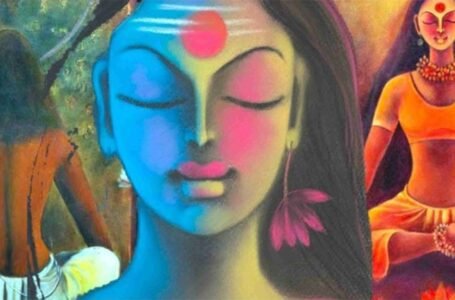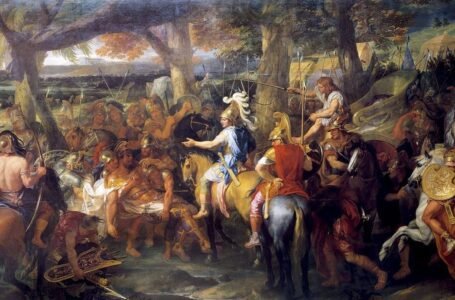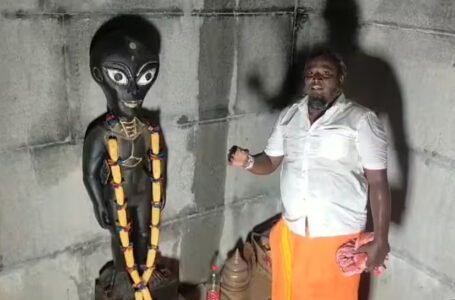Kajri: Soulful Monsoon Songs of Uttar Pradesh & Bihar

India is a country which is rich in cultures, languages, and traditions, where every form belongs to an ancient tradition and folk arts. Even in the midst of North Indian culture primarily Uttar Pradesh and Bihar, people have long been enjoying a heart soothing non film music form of Kajri. But at the present society where most people patronize popular music, this lovely and sad approach of singing is gradually being forgotten with times, much to the generations of today.
Focused on the monsoon period, kajri songs enclose great emotional values and touch upon the human experiences of waiting, loving, parting, and the paean to the ordination of nature. All these songs are sung by women and come with an imprint of tradition and history of the rural folk of Uttar Pradesh and Bihar. Hereafter is the detailed information of what has been stated above in this blog regarding Kajri; its origins and aims, and the circumstances that led to the decline in practice.
What is Kajri?
In its essence, Kajri is one of the folk music forms related to monsoon mostly being sung in the two states of UP and Bihar. Considered as sad but beautiful songs, Kajri captures the moods of a countryside life, the Rains, Nature, and All Pains and joys of Love.
Many people believe that the very name Kajri is of India origin derived from the Hindi word ‘Kajra” which is kohl or a line used by women for the eyes. That is the meaning behind this association because like the kohl, the songs enrich and beautify the listener’s feelings. The lyrics of Kajri songs are sad as they come and are sung when a husband or a lover is away during the monsoon season and rain symbolises the longing for him.
Kajri is sung only by the women and it is more commonly found in a group where women sing-sync and the lyrics are the craving of the rains or love or reunion in the female voice. Alap and Gat both of Kajri are soft, characterized by elongated notes and the inter-formation is sometimes approximating raindrop sounds.
Kajri: Its Origins and Importance
Kajri is known to originate from the country regions of Uttar Pradesh and Bihar though it is also common in few regions of Madhya Pradesh and Jharkhand. It is for this reason that its existence can be associated with the agrarian way of life together with the seasons of the monsoon rain. Monsoon has always been unique to people in the rural areas of these regions for many centuries. During the rainy season, farmers are relieved and crops are also grown from the showers; It’s also associated with love and desire.Earlier the Kajri songs are associated with rural gender, especially women; they may sing such songs while preparing to work in fields, doing house chores or even at celebrations. The messages in these songs were learnt by generations and eventually formed a permanent feature of the people residing in villages and towns of Uttar Pradesh and Bihar.
The songs are centered on the aspects of separation; either due to lover’s distance, or husband going to work. The ideas with regard to rains and love are blended in these songs in an effective manner. But whenever the rain comes, it just marks the opening of the agriculture season, as well as the sign of relief for those who seem to miss the company and presence of a loved one. Therefore, the monsoon is not only enjoyed but also symbolically represent the complex feeling of love – desire and longing.
Emotional Category of Kajri Songs:
Another principle of Kajri is that its subjects’ mood is predominantly sad. Most these songs are fairly melancholic, and feature females lamenting the loss of a loved one and how loneliness feels like. The Kajri songs are happy, but the lyrics are a fine blend of both sadness and happiness. It is, perhaps the feelings of dearness, the anticipation of new life oases after the rainy seasons or after the first showers of the season. However, this joy coupled with the sadness resulting from separation from one’s lover or husband makes the rain to sound sad.
The songs can be heard singing their own experiences and often when the women folk of the community congregate, they sing of everything, the pining desire, loss and the blessed rain of monsoons. Some of the Kajri songs depict about the natural beauty in rainy season, while some other stress on the feelings that rainy season is like the arrival of the lover or love. Some are happy referring to the joy of being together, reunion, or the much-awaited rain of monsoon to wash the heart ache.
What is more, it is concerning to realize that Kajri songs are not only about love and pain longing but also about nature. The Reception of Rain; several songs, the formation of clouds over the sky, the first rain falling down on the bare ground, the smell of the soil dragged by the rain drops, the green vegetation covers after the rains. In these songs are love as an emotion is integrated together with the celebration of the natural world.
How Kajri Songs Are Sung
Kajri is mostly performed by a group of women who sing It in the villages especially when it is rainy season. Each of the songs is characterized by a gradual tempo build up: at first a tempo is low and gradually increases. The text is normally plain, but exceptionally meaningful, describing feelings of the singer. There are vocalistic and instrumental accompaniments; in singing Kajri the traditional instruments include dholak, a two-headed small drum or tabla delivers a metronome beat. At times the ‘been’ or the flute or the sarangi is also used, giving the song an eerie, lovely effect. In many agricultural areas Kajri songs are also sung during Teej festival which is entertains the goddess Parvati. On Teej festival, women come together to sing Kajri songs, indicating the joining of husband and wife and total loyalty to one another. This brings into existence a platform where women shall sing and express their emotions of love, craving and hope hence people’s emotion.
The Decline of Kajri Songs
However, gradually this music form has left the general culture of popular music and is just recognized as a segment of traditional music that has started from centuries ago. For this reason, the market is shrinking due to numerous factors. First of all, increasing commercialization attached to the postmodernization of culture dominated by the consumption of media products has gradually marginalized folk traditional music in favour of popular music more entrancing for young people. India’s urbanization has also taken its toll on the rural aspect of society and in large part, Kajri was also a telltale sign of rural life. In addition, with easy accessibility to Electronic music and Bollywood music, which tend to obscure Kajri or any other folk tune for that matter, the traditional art forms have been set aside. Cities today are also far from the typical pieces of folk music and therefore the fading aspect of singing Kajri has been witnessed.
Kajri, the music-dance-form not only has fading prospects of the concept practicing or performing Kajri, there are fewer women who practice Kajri and there are limited or nearly zero circumstances for exhibiting Kajri in front of the public. It mainly takes place during the monsoon season in the villages, but even there, it is rapidly declining.
Trailblazers of Kajri Music
Nevertheless, there are few pioneers that work on popularisation and development of Kajri art even though the latter has become less popular. The names include one of the most active and outstanding folk singers from Bihar; Sharda Sinha, who has invested her core efforts toward the promotion of the Kajri nadan. Kajri is a unique form of art and Sinha has performed the same across different parts of India and international platforms to garner the much needed attention to this form of art.
Other influential person is Udit Narayan, playback singer, who has sung Kajri songs in his carrier. His live performances of Kajri introduced this kind of music to the public, but again in somewhat a more contemporary style. Some of the artist mentioned above, among others have contributed immensely into the revival of Kajri music.
Also, traditional local artists of the rural regions still sing Kajri on festivals, marriage ceremonies and during the rainy season. However, they are not very popular as other social platforms and there is the emerging requirement of broader coverage of Kajri.
Benefits of Kajri Songs
- Cultural Preservation: These songs form part and parcel of folk tradition of the Uttar Pradesh and Bihar. By performing them, we are reviving songs which we believe are part of the rural culture and the seven’s history.
- Emotional Expressions: These songs are good for developing emotions, although these personal feelings are more like desire, love and grief. They allow women to be emotional and express themselves in ways they do not feel unsafe doing so.
- Community Building: The method of group singing for *Kajri is beneficial in unifying women to maximize their togetherness. Thus, one might say, that the songs gather women, allowing them to share their experience, feel similar and build connections.
- Celebration of Nature: The songs are dedicated to the monsoon season and the nature around it. They are stimulating of the contours of nature to make those who observe them have a second look of the natural environment.
Fun Facts About Kajri Songs
The Kajri songs are generally sung at night during the rainy season since the cool at night is well suited for this type of song.
A majority of Kajri songs are composed in a type of folk Hindi ambiance that infuses regional dialect in it; the songs hence are completely localized.
Kajri as involved other music genre of the area such as the Chaiti & Holi songs.
Conclusion:
The Revival of Kajri
We have to respect the Indian culture which has been looming large over the occupation and modernization of India at the same time. In a way Kajri presents an opportunity to revisit a time where a soap opera was an excuse to make music, to sing and get an understanding of people’s emotions, to establish relationships with other people.So, Remote Boyle has seen in Reviving its reprised strategy of expanding Kajri can melt different part of India’s traditional musical entertainment that is located on nature, love, and longing. It may help youth to return to those true feelings that are sometimes unwound by those songs on this record. Therefore, every time you hear the drop of rain on your window you would like to recall the songs of Kajri and the very appealing culture associated with it.


